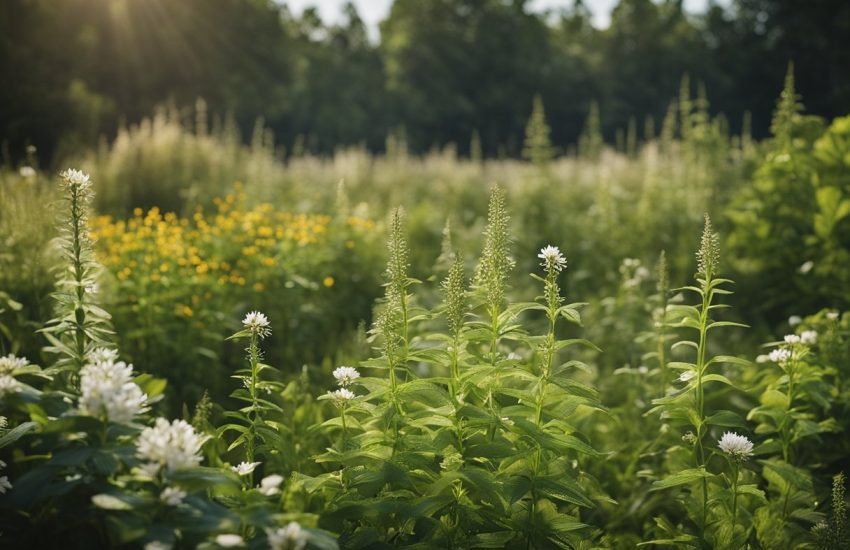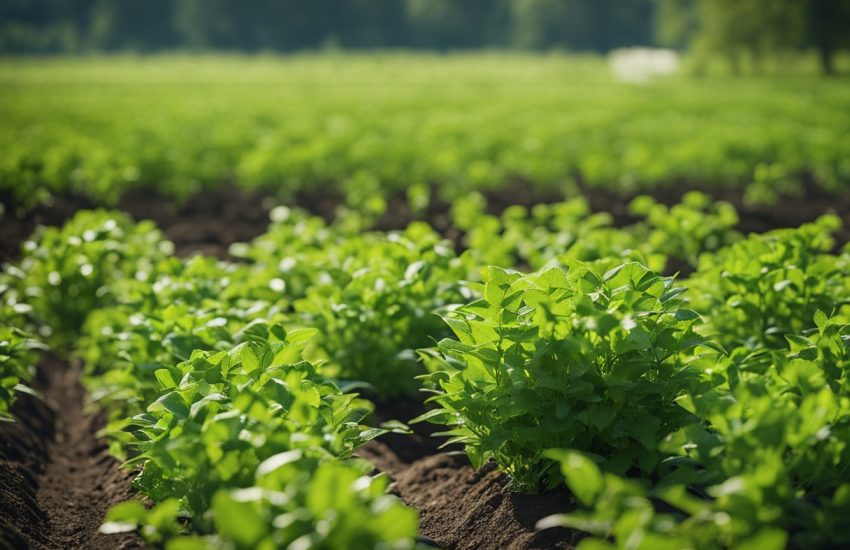Weeds That Look Like Hostas: How to Identify Them
Weeds can be a nuisance in any garden, but it can be especially frustrating when they look like the plants you actually want to grow. Hostas, with their lush foliage and attractive flowers, are a popular choice for gardeners. However, there are several types of weeds that closely resemble hostas, making it difficult to tell the difference.

Identifying weeds that look like hostas is crucial for maintaining a healthy garden. While hostas are known for their hardiness and resilience, weeds can quickly take over and choke out the plants you actually want to grow. It’s important to be able to distinguish between the two so that you can remove any unwanted plants before they have a chance to spread.
In this article, we’ll take a closer look at some of the most common weeds that look like hostas, and provide tips for identifying and removing them. Whether you’re a seasoned gardener or just starting out, learning how to identify these pesky plants will help you keep your garden healthy and thriving.
Identifying Common Weeds That Resemble Hostas

When it comes to identifying weeds that resemble hostas, it can be a bit tricky. However, with a keen eye and some knowledge, it is possible to distinguish between the two. In this section, we will discuss some of the distinguishing features of weeds that resemble hostas and also highlight some of the most common hosta look-alike weeds.
Distinguishing Features of Weeds
One of the most important things to look for when trying to distinguish between a weed and a hosta is the size of the plant. Hostas are typically larger than most weeds and can grow up to 3 feet tall and 4 feet wide. Weeds, on the other hand, are generally smaller and do not grow as tall or as wide as hostas.
Another important feature to look for is the foliage of the plant. Hostas have large, broad leaves that are typically green, blue, or variegated. Weeds, on the other hand, have leaves that are smaller and thinner, and are often a lighter shade of green. Hosta leaves are also typically smooth and shiny, while weed leaves can be rough and have a more matte appearance.
Hosta Look-Alike Weeds
One of the most common weeds that resembles hostas is the common blue violet. This weed has heart-shaped leaves that are similar in shape and texture to hosta leaves. However, the leaves of the common blue violet are typically smaller and thinner than hosta leaves. Additionally, the flowers of the common blue violet are a deep purple color, while hosta flowers are typically white or light purple.
Another weed that resembles hostas is the false Solomon’s seal. This weed has leaves that are similar in shape and texture to hosta leaves, but are typically smaller and thinner. The flowers of the false Solomon’s seal are also similar in appearance to hosta flowers, but are typically smaller and less showy.
Finally, ferns are another common plant that can be mistaken for hostas. While ferns and hostas have similar foliage, ferns typically have a more delicate texture and are not as large or as wide as hostas.
In conclusion, when trying to identify weeds that resemble hostas, it is important to look for differences in size, foliage, and texture. By keeping these factors in mind, it is possible to distinguish between the two and keep your garden looking its best.
Cultivation and Care for Hosta Plants

Optimal Growing Conditions
Hostas are shade-loving plants that prefer well-drained soil with a pH between 6.0 and 7.5. They thrive in morning sun and afternoon shade, but can also grow in full shade. Hostas are best planted in the spring or fall when temperatures are moderate.
When planting hostas, make sure to dig a hole that is twice the size of the root ball and mix in compost or slow-release fertilizer. Water the plant thoroughly after planting and keep the soil evenly moist during the first growing season.
Preventing and Managing Weeds
Weeds can be a common problem for hosta plants, especially weeds that look like hostas. To prevent weeds, it is important to mulch around the base of the plant with a layer of organic matter such as shredded leaves or bark.
If weeds do appear, it is important to remove them as soon as possible to prevent them from competing with the hosta for nutrients and water. Hand-pulling weeds is the most effective method, but herbicides can also be used if necessary.
Regularly fertilizing hostas with a slow-release fertilizer can also help to prevent weeds by promoting healthy growth and thick foliage. Additionally, dividing and transplanting hostas every few years can help to prevent overcrowding and reduce the risk of weed infestations.


